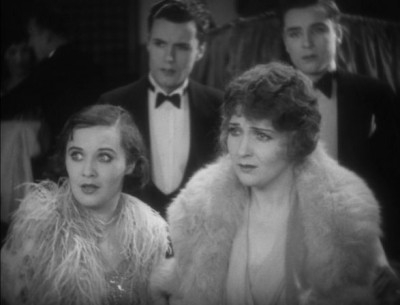
One of the bigger misconceptions in film history is the idea that D.W. Griffith made nothing of any real note once he lost his independence in 1924 and was forced to toil in (or at least toil with) the studios. The error stems from relying on contemporary reviewers and film historians who repeat those reviews without actually seeing the films themselves. What is mostly “wrong” with Griffith’s later-era work is that it contains nothing like Birth of a Nation (1915) or Intolerance (1916) — nothing that challenges the way we think about movies. That just means his later films aren’t landmarks. It doesn’t mean they’re bad. The few I’ve seen have been quite good — just not earth-shattering — and that’s OK. His 1928 film The Battle of the Sexes is a good case in point. It was soundly dismissed at the time of its release, but it looks like this was more due to the film having been falsely advertised as a kind of raucous jazz age comedy — when it’s really a slightly amusing domestic drama. Not a single thing about the film reflects such ballyhoo as “A jazz-mad gold-digger who digs fast and digs deep. But she meets her equal…in a fiery female who puts a damper on her piracy!” I can’t imagine a worse description of this little film about a straying husband (Jean Hersholt), his long-suffering wife (Belle Bennett) and the gold-digger (Phylis Haver) who gets her hooks into the old boy. Come to think of it, the title is all wrong. There really is not a “Battle of the Sexes” here.

While the film has a few bits of social commentary — mostly involving the husband making an ass of himself trying to be young — and quite a few wry observations about 1920s mores, it’s not really a comedy. It’s a drama that plays out mostly through the jilted wife and the husband’s family. Hersholt may be the star, but the picture mostly belongs to Belle Bennett in the dramatics. And, though Griffith is surprisingly sophisticated in the way he uses his camera to observe the vamp’s antics and obvious allure, he achieves his most remarkable scene on a rooftop with the mother and daughter (Sally O’Neil). It’s a stunning — still suspenseful — scene that’s quite unlike anything else I’ve seen in Griffith’s work. The fact is he delivered a good, solid, creative movie — it just wasn’t the movie the studio was marketing. Seen today — albeit, unfortunately, without its original musical track — it’s easier to appreciate than it was in 1928.
The Hendersonville Film Society will show The Battle of the Sexes Sunday, March 24 at 2 p.m. in the Smoky Mountain Theater at Lake Pointe Landing Retirement Community (behind Epic Cinemas), 333 Thompson St., Hendersonville.




Before you comment
The comments section is here to provide a platform for civil dialogue on the issues we face together as a local community. Xpress is committed to offering this platform for all voices, but when the tone of the discussion gets nasty or strays off topic, we believe many people choose not to participate. Xpress editors are determined to moderate comments to ensure a constructive interchange is maintained. All comments judged not to be in keeping with the spirit of civil discourse will be removed and repeat violators will be banned. See here for our terms of service. Thank you for being part of this effort to promote respectful discussion.